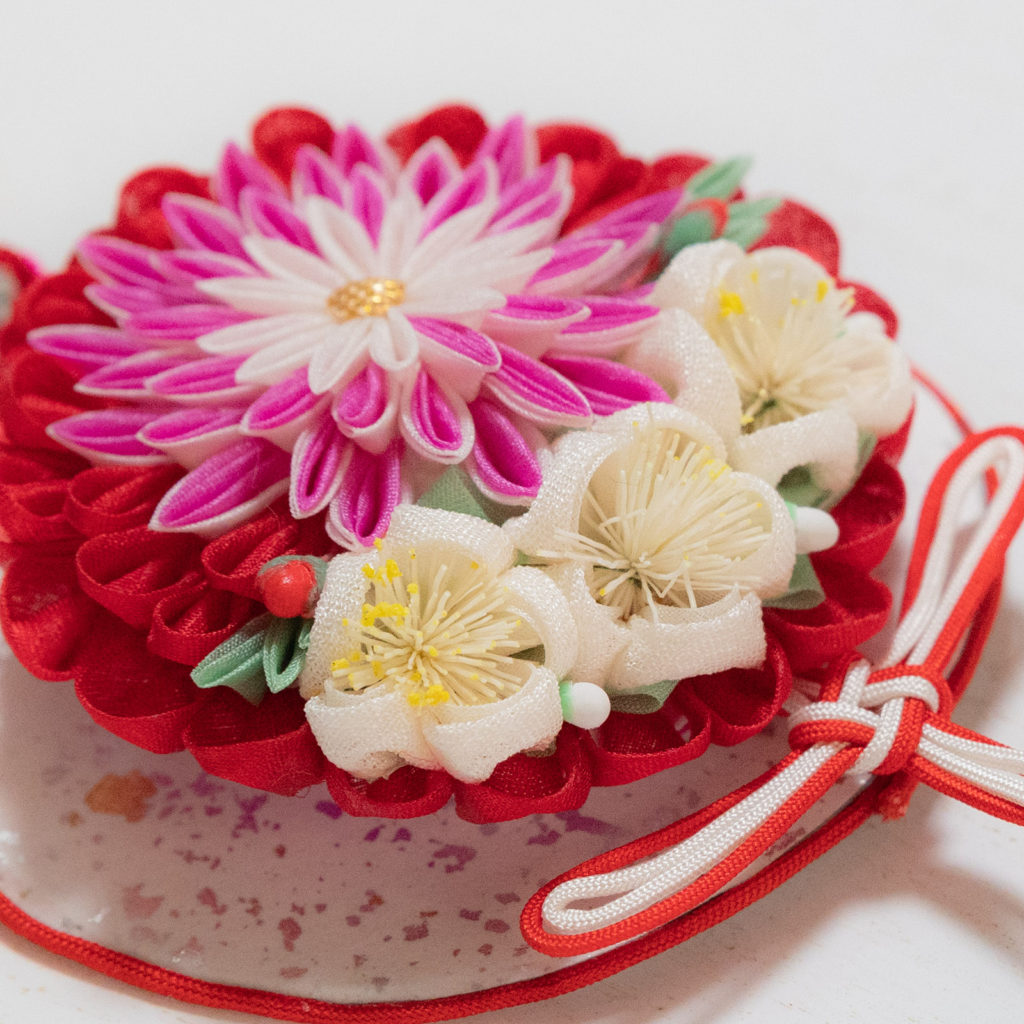
~The Workshop held at Aoi Kai, a Tsumami zaiku class in Asakusabashi.~

Kusudama
Some people may know or recognize“kusudama”, but not many people know about wall-hanging kusudama even in Japan.
This wall-hanging Kusudama was a gift given during the Girls’ Festival (Hinamatsuri) and Boys’ Festival(Tangono-sekku) in the Taisho era (1912-1926).
The one we made this time is for girls, but for boys, it was decorated with motifs of “kabuto” ( samurai helmets) and “shobu” (Japanese iris), which means “victory” in Japanese.
Nowadays, you can see them in some famous “ryotei “(Japanese-style upper class restaurants), but you will not see them in general.

The core of the plum flower designed by Riho is made of “ke-nioi,” a very precious material made from the hair of a deer’s buttocks.
Nowadays, “ke-nioi” is only used for making paper camellia by monks at the “Omizutori” ceremony at Todai-ji Temple.
*Omizutori: An event to confess sins in front of the Buddha before the coming of spring and to get rid of national disasters.

There are no written documents left about the old information related to this kind of tsumami zaiku, and we are very grateful to hear from someone who is familiar with the ancient customs and culture of Japan.
And since he also agrees with our intention to promote Japanese culture overseas, he has given us a lot of information.
We hope that we can continue to provide a useful resource for you in the future.















